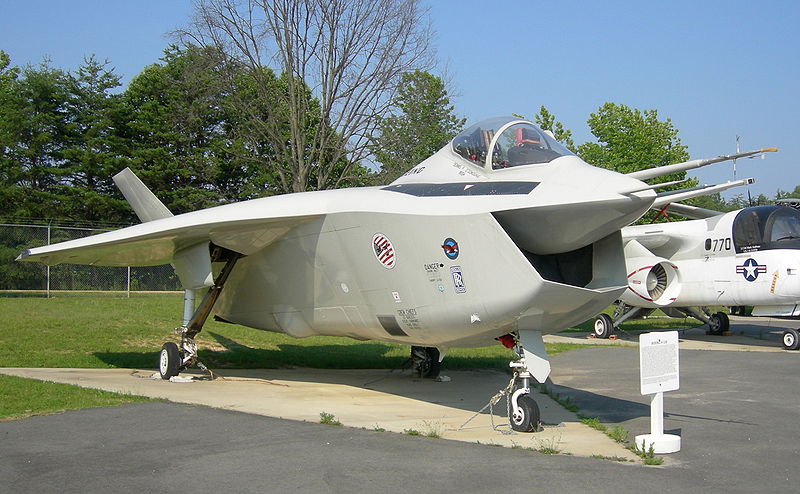|
Bacarruda posted:And once the Zumwalts get their railguns, things are going to get even more interesting. Jesus Christ it really is the future isn't it.
|
|
|
|

|
| # ? May 16, 2024 21:46 |
|
Lol like the Zumwalts will ever see the light of day. And even if they do they'll go the way of the F-22 and not work in the rain or something retarded.
Shimrra Jamaane fucked around with this message at 04:39 on Dec 12, 2013 |
|
|
|
bewbies posted:You could probably take the "most heavily defended city" by just about any measure you wanted. Guns, troops, fortifications, etc. I grew up in DC, and my house was right next to one of the defensive batteries (which was turned into a park). Used to walk my dog around there all the time. You can still see the built up platforms they put the guns on, although it's covered in thicket and not much to look at. Still, neato.
|
|
|
|
Shimrra Jamaane posted:Lol like the Zumwalts will ever see the light of day. And even if they do they'll go the way of the F-22 and not work in the rain or something retarded. Well, the first one was just launched a couple months ago, commanded by Captain Kirk no less. They'll join the Fleet eventually, though the question of how effective they'll be once they get there is still wide-open.
|
|
|
|
Shimrra Jamaane posted:Lol like the Zumwalts will ever see the light of day. And even if they do they'll go the way of the F-22 and not work in the rain or something retarded. Defense contractors will make too much money making these things for them to not be made.
|
|
|
|
I don't normally care about modern military stuff even slightly but whoah I remember "looking cool" was actually one of the major criteria for the F-35 so you just know all the "low radar profile" and "stealth siding" or whatever is just an excuse for "make it look futuristic" in this. The railguns had better glow blue and make bzapp noises.
|
|
|
|
The main chance of the Zumwalt turning out to be really horrible is its stability. They prioritized stealth over stability and nobody (publicly) knows how well it will deal with heavy seas.
|
|
|
|
This looks like a spaceship from a DOS 3D game where they had to make a ship look really cool with as few polygons as possible.
|
|
|
|
Koramei posted:I remember "looking cool" was actually one of the major criteria for the F-35 What? Also the main role of the Zumwalt's is fire support from the littorals; their gun is a pretty remarkable thing that actually has a chance to mitigate a fairly large gap in the current portfolio. It is pretty likely that they wind up more as tech demonstrators than anything else but they do represent a pretty significant advancement in naval fire support.
|
|
|
|
So for someone not interested in a bunch of naval technobabble, what's the tall and short on what these things do that other ships/destroyers can't? And while I'm asking ship questions, how is naval warfare even supposed to work now that the age of battleships and firing cannons at other ships/things you can actually see is over?
|
|
|
|
bewbies posted:What? Okay maybe not "major" but I remember it was one of a few strikes against Boeing's entry 
|
|
|
|
Flesnolk posted:So for someone not interested in a bunch of naval technobabble, what's the tall and short on what these things do that other ships/destroyers can't? Reduced observability coupled with a lot of conventional firepower. The idea was that they'd be able to operate closer to contested littoral operations by mitigating the ASCM/ASBM threat through their low-observable characteristics. The irony is they made their fire support ship cost an absolutely obscene amount of money so it isn't likely the USN is going to want to send it near any hostile shores. quote:And while I'm asking ship questions, how is naval warfare even supposed to work now that the age of battleships and firing cannons at other ships/things you can actually see is over? Lots of airplanes and lots and lots of missiles. It isn't terribly likely that we'll ever see combat between capital ships again again as no one is going to want to challenge the USN in blue water and the USN isn't going to want to get very close to hostile shores as smart people have come up with lots of ways to be dangerous to the big ships.
|
|
|
|
Koramei posted:I don't normally care about modern military stuff even slightly but whoah Meh, it's all been done  Flesnolk posted:And while I'm asking ship questions, how is naval warfare even supposed to work now that the age of battleships and firing cannons at other ships/things you can actually see is over? See the Malvinas War.
|
|
|
|
Does anyone know about MRLS/HIMARS? A history of either system or anything about them would be great. If you have any accounts of their crew, that would be interesting as well.
|
|
|
|
Waroduce posted:Chuck Yeager I read the Wikipedia article about Chuck Yeager and I just wanted to let everyone know that he was married to a Dickhouse.
|
|
|
|
Koramei posted:Okay maybe not "major" but I remember it was one of a few strikes against Boeing's entry
|
|
|
|
RE: pre-industrial warfare, how was military intelligence collated and analysed, if at all? I ask because in the modern era nations can estimate the economic and military strength of an opponent and plan accordingly. But from what I can tell, prior to industrialisation there was basically no such thing as strategic intelligence. How did anyone know even remotely the relative strength of the people they were attacking? It amazes me, for example, that Hannibal just went for a romp around italy without having the faintest idea of how many legions rome could muster or how quickly they could be brought to bear or the relative economic strengths of rome and carthage. How did the top decision makers decide if doing something was a good idea or not? Was it just bullshit 'gut feeling' that the french are weak and we can take 'em, or was there some effort to quantify strengths? I don't see how you could estimate troop numbers or something like that in a world without paperwork; indeed, how did the rulers even know what their own military strength was when there was no real formal administration or bureaucracy to keep a handle on things? Or were individual battles so important and decisive that you could reasonably expect that if you won tactically, it gave you a strategic victory regardless of the overall power of the other nation? I guess what I'm asking is how were decisions about war made in a relative information vacuum.
|
|
|
|
|
Send merchants to look around cities and countryside and noble emissaries to look around fortifications.
|
|
|
|
On a similar note, how were military operations coordinated in those days? You didn't exactly have radios and phones to be ordering a bunch of different army groups around, and carrier birds can only do so much I'd imagine.
|
|
|
|
Slavvy posted:
This was indeed a considerable problem in those days. Some of the most decisive battles of the ancient world began as chance encounters between foragers or scouting parties, with the initial skirmish drawing in more and more men until a full-scale battle ensued.
|
|
|
|
Flesnolk posted:On a similar note, how were military operations coordinated in those days? You didn't exactly have radios and phones to be ordering a bunch of different army groups around, and carrier birds can only do so much I'd imagine. Mostly, you didn't do stuff like that because you couldn't. The Romans could do poo poo like "let's send legate Biggus Dickus with two legions to put the Bongrip tribesmen in Iberia to the sword until they surrender and this other dude here goes to Gallia Transalpina to do the same" but since messages generally only travel as fast as a ship can sail or a dude can ride, a pre-19th century general/king in the field had to stick close to their army, keep it together as much as possible (need to balance out foraging and spreading out troops too much) and that was pretty much the extent of that. You didn't really have army groups, if you were a major nation you might have several armies but they're most likely all doing their own thing, since getting them to show up on time at a certain location was really hard. It's worth noting that even the invention of the telegraph and later on the telephone didn't initially do much on this front. They were more useful for the defending side since no army was equipped to lay down telegraph/telephone lines while they advance. And even if they had access to them on the advance, relying on the connection staying open was dumb. You could probably argue that even in WW1, communications on an army level didn't improve much because portable wireless wasn't really a thing, while static communications did improve. Robert E. Lee had a habit of planning operations where he divided his army to concentrate them at a target location later on and he's considered to be somewhat good on account of being able to pull that poo poo off, because the most likely outcome of operations like that means you'll get defeated in detail. Naturally having a dude like McClellan heading the opposition is an advantage.
|
|
|
|
Flesnolk posted:On a similar note, how were military operations coordinated in those days? You didn't exactly have radios and phones to be ordering a bunch of different army groups around, and carrier birds can only do so much I'd imagine. At the end of the 18th century, France implemented the Chappe system ( http://en.wikipedia.org/wiki/Semaphore_line#Chappe_system ) to gain an organizational advantage over their enemies' armies. I learned about it from this BBC article: http://www.bbc.co.uk/news/magazine-22909590. Of course this is a later period than you were asking about, but it's pre-electronic and is way faster than a rider. It could move a short message at hundreds of miles per hour across vast distances!
|
|
|
|
I was meaning more strategically/geopolitically. For example, the first crusade. Did they have any kind of a plan besides go to jerusalem and gently caress poo poo up? Did they have any information or any kind of grasp of the opposition they would face or the conditions on the ground or the likely response? It seems everyone would just act completely in the blind and start wars with little or no idea as to the power of the enemy.
|
|
|
|
|
Probably not completely blind, they'd have a fair idea of how wealthy their opponent is and how much population they have. You could arrive at a ballpark figure for relative manpower and equipment ability.
|
|
|
|
veekie posted:Probably not completely blind, they'd have a fair idea of how wealthy their opponent is and how much population they have. You could arrive at a ballpark figure for relative manpower and equipment ability. Actually, population figures were strictly kept secrets back in the day. It's a lot harder to estimate what sort of manpower your enemy has when 90% of the population lives in the countryside.
|
|
|
|
Exact counts, sure, but you know how much land they have, and your merchants know how their cities compare to yours. Probably not good for figuring out anything more detailed than "they have twice as much land as we do and they're filthy rich" though.
|
|
|
|
Ask one of your officers who used to work for the people you're currently fighting; get invited to their fortifications and ask for a tour (in the 1700s they'll give you one, even if it's your army outside the front door, but in the 1700s they're very self-conscious and gentle); espionage; your ambassadors are always--always--also spies. They knew less than we would but more than you'd think. No information vacuum. And early modern heads of state did care about geopolitical concerns; read The Grand Strategy of Philip II or something on Charles V or Elizabeth I for good examples.
|
|
|
|
Flesnolk posted:So for someone not interested in a bunch of naval technobabble, what's the tall and short on what these things do that other ships/destroyers can't? The ship class was basically in development hell for a while. It was originally a program called DD-21 (21st-century destroyer, rah rah), packing two vertically-firing guns (gun fires straight up, getting the shell above most of the atmosphere as fast as possible, and then it glides to the target), a shitload of VLS cells, and an all-electric drive (which is actually a pretty neat idea, instead of gas turbines turning a mechanical transmission to turn the screw, your turbines are just electrical generators and the electricity goes to turn a big gently caress-off 30,000-horsepower electric motor). It got pared back appreciably, and now has two regular guns, far fewer VLS cells, the electric motor isn't as advanced as the one they wanted to use because that one couldn't be made to work right, and its capability for local air defense isn't as good as existing AEGIS-equipped ships. Basically what it does that other ships/destroyers can't is (a) be ridiculously expensive (b) do a better job at NGFS which is pretty much who-cares because if you're doing NGFS two cheap ships with one gun each is probably a better idea than one really expensive ship with two guns and seriously there's going to be at least one aircraft carrier helping out so it's not like you're going to re-live Iwo Jima and (c) keep Ingalls and Bath Ironworks in business so that we don't lose more shipbuilding capability than we already have. quote:And while I'm asking ship questions, how is naval warfare even supposed to work now that the age of battleships and firing cannons at other ships/things you can actually see is over? The submarines kill everything so the carriers can keep sending up planes and dropping bombs on things.
|
|
|
|
Phanatic posted:The submarines kill everything so the carriers can keep sending up planes and dropping bombs on things. I was under the impression that ASW technology had advanced to the point where submarines are just (?) one-shot weapons now. Or was that what you meant.
|
|
|
|
Are all Osprey books filled with lies, propaganda and pretty pictures? What quality are their books about Ancient Mediterranean and Middle East?
|
|
|
|
gradenko_2000 posted:I was under the impression that ASW technology had advanced to the point where submarines are just (?) one-shot weapons now. Or was that what you meant. We have probably the best ASW in the world and it's still a very hard job, and even 20-year-old diesel/electric subs are a serious threat if they know where you're going. Submarines have a lot of advantages and modern submarines are terrifying.
|
|
|
|
gradenko_2000 posted:I was under the impression that ASW technology had advanced to the point where submarines are just (?) one-shot weapons now. Or was that what you meant. Well-handled submarines are a serious threat, especially some of the modern diesel-electric boats because they're loving quiet (nuclear powerplants are comparatively noisy). Add in the fact that some subs have cruise missiles, which gives them some standoff capability. In response, quite a few countries are quietly beefing up their ASW capability, especially given that China's launching more subs (rumor has it they'll be launching a new ballistic missile subs next year). The US Navy, the Australians, and the Indians have ordered the P-8 Poseidon (basically a 737-800 that can hunt and kill subs). The Aussies also just got MH-60R ASW helicopters.
|
|
|
|
It always seemed to me that recent advances in navy technology seem to be focused on defending from missile attack, and comparatively little work has been done on stopping a submarine from unloading, say, a bunch of Shvals into your carrier battlegroup, and then slinking away in the chaos.
|
|
|
|
Bacarruda posted:Well-handled submarines are a serious threat, especially some of the modern diesel-electric boats because they're loving quiet (nuclear powerplants are comparatively noisy). Add in the fact that some subs have cruise missiles, which gives them some standoff capability. Yeah, I did know that diesel-electrics are like a black hole of sound and all that. I just faintly remembered a conversation wherein any modern attempt to conduct unrestricted submarine warfare would end with insurance premiums skyrocketing and then the offending sub being hunted down and destroyed in very short order.
|
|
|
|
How was the modern era targeting with artillery ? Some rough estimates about the angle , and then some bracketing till you get the range right .That's what I imagine but calculating just the range without firing a shot seems like a nightmare , without a good cosine and sine aproximation or a good speed out of the barrel. hump day bitches! fucked around with this message at 15:53 on Dec 12, 2013 |
|
|
|
Fangz posted:It always seemed to me that recent advances in navy technology seem to be focused on defending from missile attack, and comparatively little work has been done on stopping a submarine from unloading, say, a bunch of Shvals into your carrier battlegroup, and then slinking away in the chaos. A good dead of anti-submarine warfare is done by other submarines. Sub forces tend to be pretty close-lipped about capabilities (they are the "Silent Service," after all) to a greater extent than the surface warfare community. So it's quite possible that great progress has been made in refining ASW, we just haven't heard about it because it's classified or just not widely talked about. Submarines are occasionally attached to CSGs, and I'd imagine ASW is one of their primary missions in that situation.
|
|
|
|
What makes the difference in the noise level of different subs?
|
|
|
|
veekie posted:What makes the difference in the noise level of different subs? A nuc has to run the reactor's coolant pumps 24/7 even when it's otherwise idle, as opposed to a diesel-electric just running on completely silent batteries.
|
|
|
|
Lamadrid posted:How was the modern era targeting with artillery ? Before fancy laser, or even optical, rangefinders, you would kind of eyeball it. Or, you could use the markings on your sight (a stadiametric rangefinder) to look for a known height object like a person at the needed range, and estimate from that. Then you have a big table of precomputed values with the necessary settings on it to fire at that range. The faster your shell flies, the more margin of error there is for a vertical target, but dispersion for a horizontal target is also larger. Edit: if you're on the defensive, you may be lucky enough to have the time to measure out some distances to some landmarks, which helps a lot.
|
|
|
|

|
| # ? May 16, 2024 21:46 |
|
veekie posted:What makes the difference in the noise level of different subs? A whole bunch of different things, it's an entire field of study. Diesel boats can run on batteries for a while which is very quiet since there's nothing moving except the electric motors turning the propeller. Nuclear boats have reactors that heat water (usually water, sometimes not) that gets moved around by a pump, which creates noise. But with newer nuclear boats, if they're willing to move slowly enough the reactor coolant can circulate just by convection in which case you can turn the pumps off. Machinery like the pumps or the gears and so forth is mounted on isolation mounts to minimize the coupling of any vibration from the equipment to the hull, and from there into the water. The actual propeller has a lot to do with it. Ducted prop vs. conventional makes a difference. The shape of the blades and hub is generally top-top secret; as the blade turns it generates an area of low pressure behind it, and bubbles can form there. These bubbles then collapse, which generates a good amount of noise, and shaping the propeller to minimize this phenomenon is a very big deal. There was an incident in the 80s where Toshiba partnered with a Norwegian company to illegally transfer CNC milling machines to the Soviet Union that let them cut the complex shapes required to improve their propeller design. Flow noise over the hull makes a difference, so hull shapes, fairings, through-hull fittings, hull coatings, all make a difference; if you look at a modern sub you'll probably see tiles all over it, these are rubber and/or plastic tiles with voids in them, all intended to minimize sounds at various targeted frequencies. The ambient conditions make a lot of difference; speed and transmissibility of sound through the water varies with temperature, salinity, depth, frequency, and does so in a complicated and non-linear fashion. Suffice to say this rapidly approaches ridiculous level of complexity and there are some good textbooks. http://www.amazon.com/Principles-Underwater-Sound-3rd-Edition/dp/0932146627
|
|
|





























